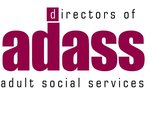Is understanding falls risk the key to better falls management?

21 March 2023
“We know for certain that management of falls and better understanding of falls risk is high if not top of the public agenda. Current technology solutions are aimed at falls notification but there would be high demand for technology that could accurately predict falls risk achieving better outcomes for people to live safe happy lives in their communities.”
Alyson Scurfield, Chief Executive TSA
When we read those words from Alyson Scurfield two years ago, it helped us decide to devote time and energy towards developing a new product aimed at understanding risk better. The logic for us was simple: many older people experience falls, they are a high cost to the NHS and Local Authorities and yet prevention techniques such as modifications to exercise, diet, or the home environment have demonstrated the potential to reduce the risk of falls, when applied at the right time to the right person.
The challenge has always been to know which individuals to target with these techniques, and when, before they have had their first fall.
Most readers will already be familiar with the cost of falls: they are the number one preventable reason that people over 65 make unplanned trips to hospital. Each year in the UK, one third of over 65’s experience a fall, a number which rises to half of the over 80’s.
Apart from the significant financial cost, there’s the physical and emotional damage experienced by those who suffer from a fall. We don’t believe it is yet possible to accurately predict a fall, but we set out to discover if it was possible to understand and monitor changing risk levels in a way that could support more accurate intervention.
To start with, we read every published medical and scientific paper published over the past 10 years and our research identified and ranked over 400 potential causes and indicators of falls. We then isolated 49 different factors that could be measured and monitored. We included any factor which has demonstrated evidence of correlation with the occurrence of falls and then sorted these factors according to how well they predict a fall occurring, and by ease of measurement.
From there we built a series of algorithms that combine these measurements into a single score – a Falls Risk Index. The Index allows us to create a baseline score, track of changes in the score over time and has the ability to identify what element of a person’s life is changing that score, so that interventions can be better targeted.
What makes the Index most attractive as an assessment tool we believe, is that the baseline score can be created based on data already held in a health or care record before any decision has to be taken about what technology could be deployed for further monitoring. This gives the NHS and Local Authorities a low cost, low effort starting point from which they can then risk stratify large groups ahead of choosing the right care pathway.
More accurate and continuous monitoring of falls risk could create intervention points which allow carers to act to stop the fall occurring and, in the process, save the older person from injury and distress, while avoiding costs for the NHS and Local Authorities. This also aligns with broader NHS long term plans for remote management of patients and the 4P model of Predictive, Participatory, Personalised, and Preventative care.
We will be launching the Falls Risk Index at ITEC Conference and will be sharing a demo of it. We are really excited to take the next steps towards proactive and preventative care.
Join our Knowledge and Networking session, taking place on Tuesday 28 March from 13:45 - 14:30 to hear more.







